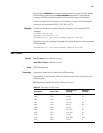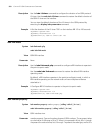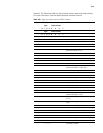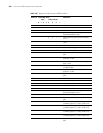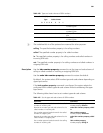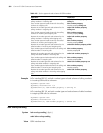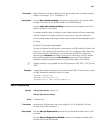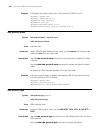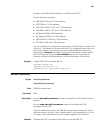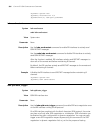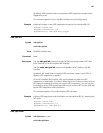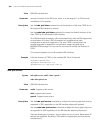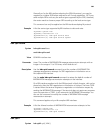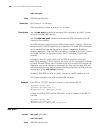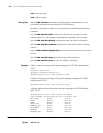
585
By default, both BRI and PRI interfaces run ISDN protocol DSS1.
You are allowed to configure:
■ ANSI ISDN on BRI and T1 PRI interfaces;
■ AT&T ISDN on T1 PRI interfaces;
■ DSS1 ISDN on BRI, E1 PRI, and T1 PRI interfaces;
■ ETSI ISDN on BRI, E1 PRI, and T1 PRI interfaces;
■ NI (National ISDN) on BRI interfaces;
■ NI2 (National ISDN) on T1 PRI interfaces;
■ QSIG ISDN on E1 PRI and T1 PRI interfaces;
■ NTT ISDN on BRI and T1 PRI interfaces.
You are not allowed to configure this command on an ISDN interface if there is still
a call on it. This command can take effect only if it is configured when there is no
call on the interface. Alternatively, you can manually disable the interface by
executing the shutdown command, configure the command, and then enable
the interface by executing the undo shutdown command. The operations,
however, will lead to the disconnection of the call existing on the interface.
Example # Apply ISDN ETSI on interface BRI 1/0.
<Sysname> system-view
[Sysname] interface bri 1/0
[Sysname-Bri1/0] isdn protocol-type etsi
isdn q921-permanent
Syntax isdn q921-permanent
undo isdn q921-permanent
View ISDN BRI interface view
Parameter None
Description Use the
isdn q921-permanent command to enable the Q.921 permanent link
function.
Use the
undo isdn q921-permanent command to disable the Q.921
permanent link function.
After you enable the function, the ISDN BRI interface automatically sets up and
maintains one or two Layer 2 links, whether Layer 3 calls are present on it or not.
Two Layer 2 links involves when two-TEI mode is enabled on the interface.
Example # Enable the Q.921 permanent link function on interface BRI 2/0.



